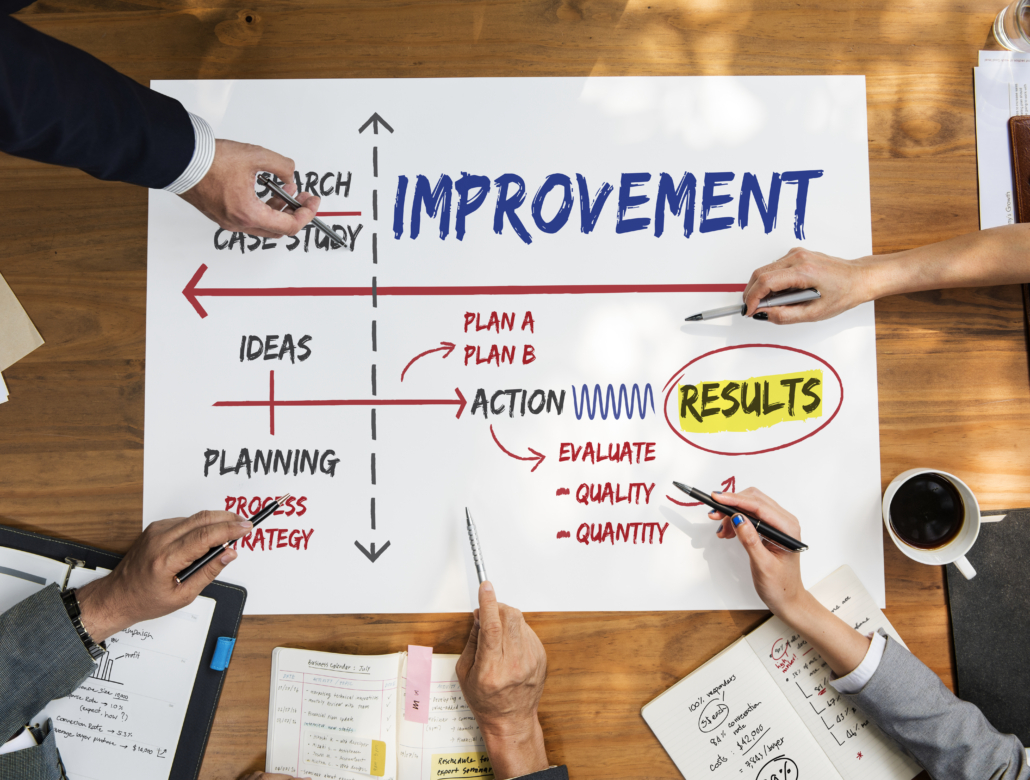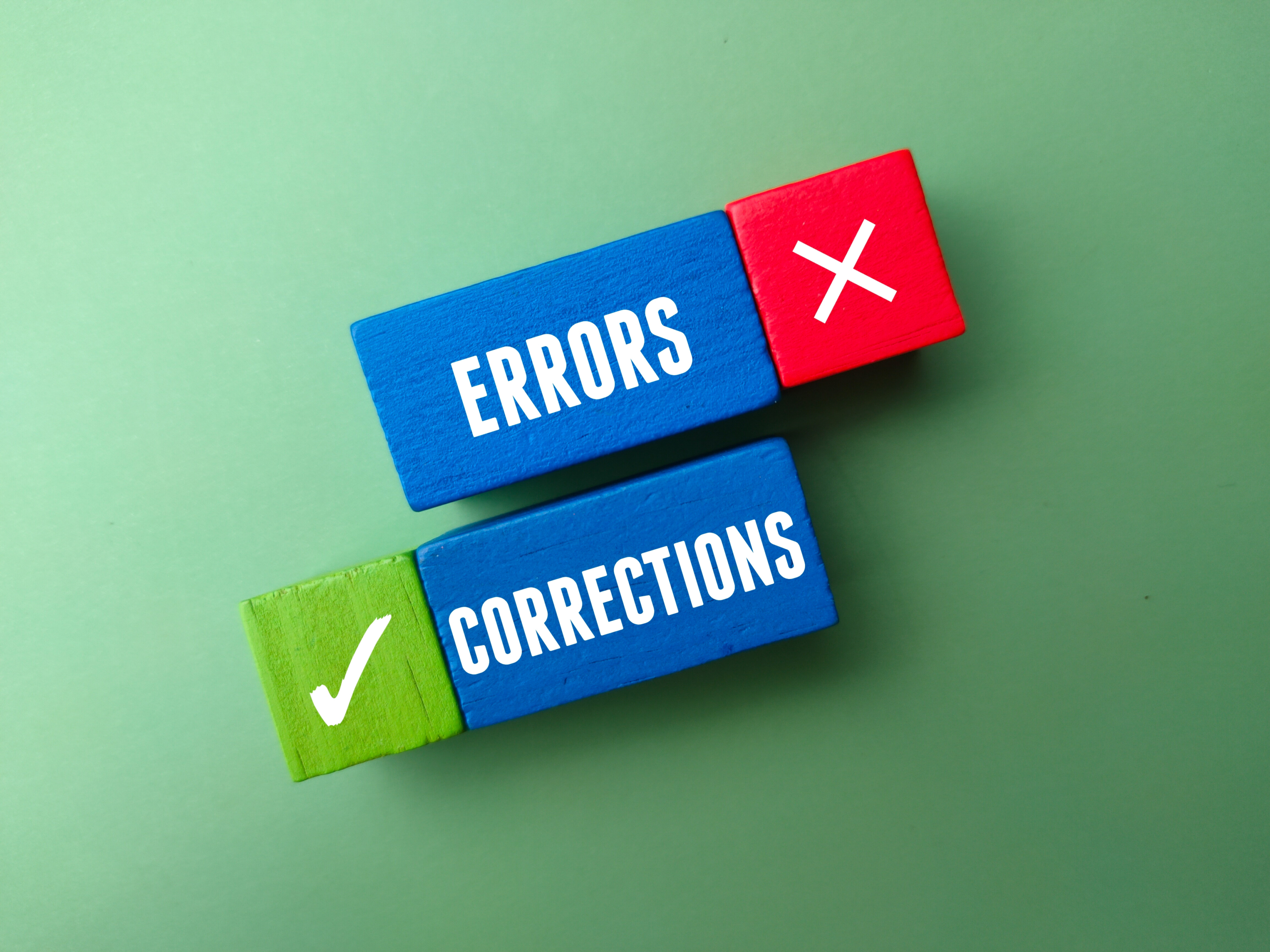The Continuous Improvement Process Explained
You can apply the Continuous Improvement Process to any business, irrespective of the industry or size. There are no business leaders today that would not want the opportunity to be able to improve their business. The reality is that for any business, improvement should be built into the organization if they want to not only survive but also grow. The process known as continual improvement has been designed to provide exactly that value.
In this article, we’ll give you continual improvement examples and techniques that will help you operate your business better.
Business improvements are not only beneficial to the bottom line, but also improve safety and quality, as well as customer and employee satisfaction.
Whether you know which areas of your business need to improve or not, we’ll provide you with everything you have to know about continual improvement, as well as examples of how to implement it to great benefit of the organization.
Continuous Improvement Process Defined
Let’s first define continual improvement. Continual improvement is rooted in manufacturing and the goal of the method is to identify opportunities that ensure continual efficiency. The process involves assessing current services, products, and processes to make sure that waste is minimized while output is maximized.
Continual improvement is beneficial to both external and internal stakeholders, from investors to customers to employees. Continual improvement can however never be a one-and-done deal where a company does it once and then forgets about it. As the name indicates, the process is continual and takes ongoing effort, which means it never ends.
The method should become an integral part of the business’s ongoing processes. It becomes a way of doing things, rather than something new that is only tried once. Although it should be a part of how your business does things, it still needs a methodology and strategy to bring about change.
As continual improvement is a way of operating, everyone in the company must be involved. To make it work, it is crucial to create a culture of improvement. This is often done by empowering all employees in the organization to understand that it is part of their responsibility to highlight areas where development can lead to positive change.
Process Improvement Types
There are several methods that are commonly used to achieve continuous improvement. Let’s look at three types and then examine some continual improvement examples.
- Six Sigma: Six Sigma focuses on the improvement of business processes’ quality. It aims to limit variations in processes to ensure increased performance and consistency. Statistics are used to measure deviations from a defined center line.
- Total Quality Management: Total Quality Management (TCM) is reasonably similar to Six Sigma and holds all parties involved responsible for producing high-quality outputs. It aims to standardize processes to minimize errors.
- LEAN Management: This methodology was created by Toyota to optimize its production cycle. LEAN improvement focuses on customers and defines what customers value most from the process to establish what can be eliminated from a product to cut costs and reduce waste. The Plan-Do-Check-Act cycle is a model that is often used to implement change. It is an essential component of the Lean manufacturing philosophy.
Irrespective of the type of continual improvement process used, many companies also incorporate a kaizen system in their continuous improvement efforts.
9 Examples of Continuous Improvement Process
Once we understand what continual process improvement is, it’s useful to look at examples to see how the theory can be applied in a business setting.
1. Polls and Surveys
Employees within an organization know how things work or are supposed to work and are therefore the best source of suggestions for where improvements can be made. Although it is very important to obtain feedback from vendors and customers, employee feedback is often overlooked.
You’ll be able to easily find places for improvement and employee pain points by polling the team. As business leaders spend most of their time on the big picture. Without such insights, they often don’t notice the smaller details that can affect the business’ outputs significantly.
2. Think Tanks and Ideation
Initiating regular ideation sessions and think tanks can be very beneficial to an organization. Although running think tanks with a specific agenda in mind can be advantageous, at a minimum, the attendance of key personnel should be made mandatory so that valuable ideas can be discussed.
You can explain how processes currently operate during those sessions to determine if changes need or if there are areas that must be improved. As technology is often intertwined with many business processes, a handy starting point may be to discuss new technology solutions and updates aimed at optimization.
3. Time Audits
Time is one of the resources that is most often wasted within most businesses. The ability to measure and gauge accurately how much time a process should take can provide great insights into where a process can be optimized. The solution can be as simple as implementing software that times a process. Once you have the data, you can easily determine how long a process takes and find ways to eliminate the time that is wasted. This may take the form of reducing touchpoints and automating approvals, thereby preventing potential delays and bottlenecks from happening.
4. Regular Training
In big companies, it is often for employees to work within a “swim lane” or silo. Automation software and cross-training can however contribute to process improvement. If you for example train employees to be able to do more than one job, the absence of one person due to vacation or sickness will not harm the process if another can take their place.
You could also implement automation tools within the organization to reduce the dependency on key personnel. Many automation tools are designed so that processes are stored centrally and can be run by any individual that has access. This makes it easy for someone to take over when a key individual is not available.
Irrespective of how experienced your team is, a very valuable continual improvement activity is regular staff training. Things will always be changing, making this a great way to keep everyone up to date with knowledge and skills.
5. Environmental Improvement
Although it’s logical to focus on things like productivity levels and operations, don’t make the mistake of overlooking the environment in which the team works. If you make changes to improve the environment, it can lead to increased productivity. You can for example adjust lighting, add green landscaping, and modernize the interior design.
6. Catchball
Processes are most often not started and completed by a single individual. This means that each process must have someone ultimately responsible for its execution, although it may require the assistance and input of multiple people.
Catchball is a continual improvement method that specifies that the person who initiates a process should clearly state its purpose and concerns to all other parties involved. This allows for them to “throw” it out to a group for ideas for improvement and feedback, while the single individual is still responsible for its completion.
7. Information Technology
Adding new technological tools and software that can assist in workflows is another example of continual improvement.
8. Stand-Ups
Stand-ups are an excellent way to ensure everyone is heard and involved. These open forums for discussion allow everyone in the organization to ask for needed support, discuss their projects, and air their pain points.
9. Edit Work
Editing work is just one of the many process improvement examples available. Editing a team’s work will likely make a massive positive difference.
The above examples are merely some of the many ideas available to get going with continual improvement within the organization.
Typical Areas That Benefit Most from Continuous Improvement Process
There are some areas within a business that often breed waste and therefore have lots of room for improvement:
- Errors: Invoice errors, manual data entry errors.
- Timeliness: Information bottlenecks, approvals, and system downtime.
- Production: Printed documents generated before being required.
- People: Micromanagement, excessive management, and an underutilized workforce.
The above baseline examples are but a small sample of what many businesses have to face daily.
Creating an Environment of Continuous Improvement Process
Now that you’re aware of the examples described above, you can start your continuous improvement journey. Before you start, however, ensure that your workplace environment is set up for success. To do this, we recommended that you:
1. Encourage Positively
When trying to drive positive change, positive encouragement will go a long way. Support anyone who requires it and ensure that you praise positive changes, irrespective of how small or big.
2. Communicate Clearly
When everyone is included, it’s crucial to communicate clearly. This helps to develop an open culture where everyone is on board.
3. Get Everyone Involved
Each person within your organization adds value to how operations are run. This means they should all be involved in the process of continual improvement. It’s a team effort that will only work if it is inclusive.
Breakthrough vs Incremental Continuous Improvement Process
One continuous improvement model uses a full-fledged approach where all significant issues are dealt with at once, while the other uses smaller changes that are made as you go.
Breakthrough Continuous Improvement Process
Breakthrough continual improvement involves directing the process for improvement and approaching the changes strategically rather than making changes during the process itself. This approach typically deals with more substantial items that need to be corrected and requires the whole team to implement them.
Incremental Continuous Improvement Process
The improvement approach is done as problems are recognized during a process. The advantage of this approach is that it is faster and cheaper than breakthrough continual improvement.
If you run a process and a mistake is noticed, like for example an error in data or a typo in a brochure, the error can be fixed as you go. To ensure that the process is executed in its next iteration without the same error occurring, it means that the change needs to be communicated. Incremental continual improvement can be beneficial providing that the person fixing mistakes communicates clearly to the rest of the organization.
Continuous Improvement Process Benefits
The aim of continual improvement is twofold: to reduce waste and streamline workflows. These work together to optimize outputs and reduce costs, whether it be the quality of a service or product.
Reduce Waste
Executives and project managers use data and models to track every project’s cost. They can use the continual process improvement process to determine where fees are too high and then work towards reducing waste, and therefore costs, to make the process more efficient.
Streamline Workflow
Most processes need multiple parties or touchpoints. There is always room for improvement in these scenarios, whether it’s from the communication between people involved in its completion or the basis of the data required.
Implementing Continuous Improvement
The continual process improvement process seldom has a well-defined beginning and end. This means that it will work best when it becomes part of the company’s culture and involves everyone within the organization.
Let’s explore some considerations to keep in mind when making continual process improvement part of your business:
1. Motivate Employees
You should not only breed a culture where all employees are empowered to note inefficiencies and offer solutions, but you should also develop rewards for the culture to be motivational. You could for example create rewards or implement an accessible system where employees can continually share feedback.
2. Seek Feedback
You should elicit feedback from employees, stakeholders, and customers continually throughout your operations. Although the feedback will help identify opportunities for improvement, it can also lead to new ideas and offer new perspectives.
3. Manage Improvement
It’s crucial to set reasonable goals. When focusing on improvement, break down bigger projects into measurable, smaller pieces. This will not only help reduce overwhelm but will also ensure everyone stays involved on the right path to success.
In Conclusion
Continual process improvement provides a methodology for a business to improve at any point. Whether you choose to implement continuous improvement via the breakthrough method or by using incremental improvements, or decide to mix the two, you can help to optimize outcomes and reduce waste. The continual improvement strategies and examples discussed above will help you in achieving your business goals.
Like all types of process improvement, remember to monitor and track all changes to ensure you are moving towards improvement, rather than damaging any other part of the process.
Our Non Conformance Reporting System is one of the many continuous improvement tools available today. It is an easy-to-use tool that can be implemented to make the continual process improvement process in your company much simpler and easier to manage.



